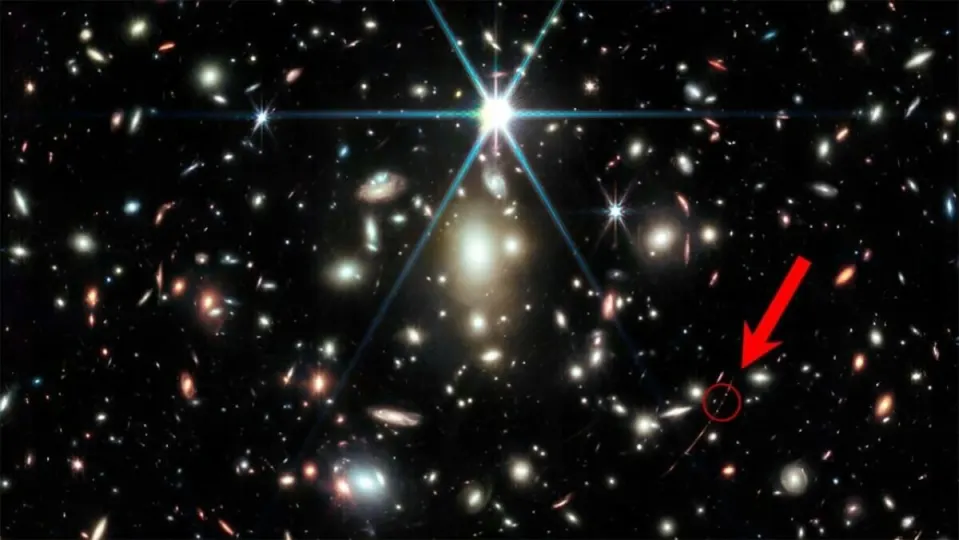If we mention “Earendel” to you, you might immediately think it’s an elf from Middle-earth (the world of The Lord of the Rings) who embarked on various adventures with Legolas and Galadriel. The answer is a “well, not quite, but almost” (you’ll understand why now).
Earendel, the farthest star ever observed, is located 12.9 billion light-years away from Earth. Discovered in March 2022 through the Hubble Space Telescope, the star was named after a character from the poem “The Voyage of Eärendel, the Evening Star” by writer J. R. R. Tolkien, which was later incorporated into The Silmarillion.
While the star had been known for a year thanks to Hubble, it wasn’t until this week that its “companion,” the James Webb Space Telescope, revealed the color of this distant star, as well as the presence of a “partner.” However, due to its mass and distance, the star almost certainly does not exist today.

The image captured by the James Webb Space Telescope depicts the star as a tiny reddish point. This size indicates the immense distance of the star since, according to NASA, it is a massive star over two times hotter than the Sun and nearly a million times more luminous. Quite remarkable.
Based on the colors of Earendel, researchers believe the star has a cooler, redder companion. The lack of certainty in this matter arises from the fact that they are so close together that the James Webb cannot distinguish them.
This new image of Earendel resulted from two exposures taken by the James Webb’s NIRCam, the near-infrared camera of the telescope. The first was captured on July 30, 2022, while the last was taken on January 1 of this year.
Thanks to the James Webb Space Telescope, we can peer into the darkest corners of the universe. This powerful space telescope has already revealed remarkable wonders such as a massive red question mark, the Ring Nebula, three purported “dark stars,” the oldest known supermassive black hole to date, and an exoplanet laden with volcanoes that could potentially harbor water.
Some of the links added in the article are part of affiliate campaigns and may represent benefits for Softonic.


